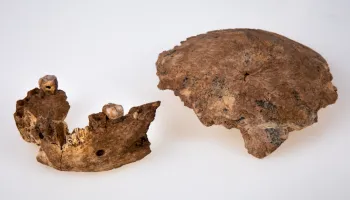Who is Acheulean?
A long-time stone-age tradition of history was named as an Acheulean, with some oval and Pear shaped stone distinct as an instrument of the veterinarian associated with Homo Erectus.
It was the latest report of Wednesday’s publication on Acheulean research. It is said that after 177,000 years of the monsoon zone in the Thar Desert site of Singi Talav, the youngest ancestors of Acheulean weapons were found.

What does the report say?
According to the journal, Scientific Reports, Max Planck Institute for Science and Human history in Germany found the key to an Acheulean in the Thar Desert, Rajasthan.
It is said that after research, they have come across the earliest Acheulean connections around 177,000 years old. This means that there was an extremely close interaction between the Homo Sapiens and Revolutionary cousins.
After the disappearance of Acheulian from Eastern Africa and Arabian about 214,000 years ago, India was expected to be the oldest site for the research of stone ancient weaponry.

But when studied it came up to be the youngest Acheulean site, which shows the persistence of the population of Acheulean.
The study also observed that the interaction between the population met critical to revealing the cultural landscape, and humans were encountered by the earliest species of ours to go beyond the Africa region.
Furthermore, fossils used in the research are very rare in South Asia. It indicated modifications of carving, its use, and left behind the youngest weaponry.

This note of analysis will support the researchers to study deep into the continuing of Acheulean about the wider identity of the geography that these populations inhabited.
Also, enable us to understand both when ancient humans inhabited here and invented the stone tool assemblages, and how these occupations compare with other sites across the region.
Also Checkout: Exploring the City of “Tehzeeb”- Culture of Hyderabad











